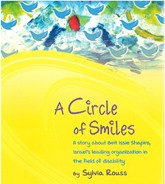How wonderful to have another book of retellings of fabulous folktales and midrashim, classic and modern, to add to the storehouse of tellable stories! These thirty-six tales transmit Jewish culture and values according to six themes, such as “Doing What’s Right” and “Teachers and Friends.” Each brief story (2 – 5 pages) concludes with some insightful commentary about its lesson and questions that explore its theme. At the end of the book, there is also a Values Index. The stories take place in various centuries and places, including ancient Israel, the East European shtetl, the State of Israel, and the USA.
In Rabbi Feinstein’s versions of these story gems, he engages in a creative riff that produces some twists and turns different than the traditional tales. In other words, he has created variants of well-known stories through his adaptations. Sometimes those changes work wonderfully (as in “Challahs in the Ark”) but, at other times, the message is stretched (such as “The Bird in the Tree”) or even misconceived (such as “The Magician”). However, there is a major omission and weakness in this collection. This book lists no sources for any of the stories other than an occasional mention of a specific rabbi and time period. Some stories are midrashim that could have been easily sourced, but other tales that ‘seem’ to be midrashim, or another genre, may, in fact, be creative writing or pure invention (such as “The Rabbi and the Gladiator” and “The Last Story of the Wise Men of Chelm”). In fact, when tales are not identified as a midrash, a folktale, an original tale, or a tale based on an historical event, it leads to confusion about the stories.
Adaptation of stories is part of the vibrant fluid folklore process, but we need to know that the story comes from a source, such as the Talmud or midrash, or is most identified with a specific Hasidic rabbi or a biblical-turned-folklore character. In his introduction, Rabbi Feinstein writes: “I did not compose these stories. Some of them I read in books. Some I heard at a Shabbat dinner table. Some I remember from my childhood. There are great scholars of Jewish stories who can tell us where a story came from, who first told it, and how in different versions developed. I have great reverence for such scholarship. But that’s not my expertise. I’m interested in a story’s power to teach. And so, to make the most of that power, I have taken the liberty of retelling the stories in my own way.” This “explanation” may be a justification for Rabbi Feinstein to retell these classic folktales, but it does not go far enough. As Jews, we always respect sources and proof-texts. We always want to know where a story or idea comes from. Not everyone may read that “disclaimer” in the Introduction and, thus, may assume that Rabbi Feinstein is the “author” of these stories or they are the versions he read/heard/remembers. I am glad to see that his credit line on the cover is “Retold by Rabbi Edward M. Feinstein” but that, too, is not enough.
The power of teaching comes from connecting our stories to our rich oral and literary tradition, sacred and secular. We need to teach our young people, from the earliest ages, that these stories are grounded in sacred, cultural and historical contexts. They are stories told by Jews wherever they have lived and over the centuries and why. Yes, we need to honor our sources. And also note how the reteller has changed the traditional folktale and why. Publishers of books for young and old now include pages of sources at the end of a book or at least a source is given at the end of each story. Librarians and all educators can teach the story better when they know the source and genre in order to use the stories for discussion and teach about various ethnic communities. I would hope that when this book is reprinted (or even before the publisher sells out the first batch), the publisher will insert a few pages of sources for these stories. Then the book would be more worthy of being a tool of teaching since we would know for sure that the values and lessons embedded in these stories are based on a strong foundation that is acknowledged and honored. This book of stories can appeal to a great range of ages from 6 to 120.



